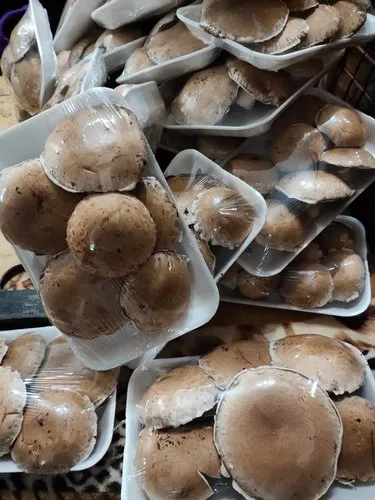Coleslaw is among the most versatile meals available. It is a great topping, as an element of a picnic or as a dish with barbecued meats or chicken. If you have leftover coleslaws, especially when you’ve prepared them yourself, you’ll be tempted to save them for future use. Is freezing coleslaw an alternative?
Is it OK to freeze coleslaw?
The quick answer is yes. You can freeze coleslaw as long as it does not contain mayonnaise. The coleslaw with vinegar and oil-based dressing is best suited to frozen.
Why freezing coleslaw with mayonnaise is not advised? The reason is that mayonnaise doesn’t freeze well. Mayonnaise can segregate after being frozen. It will result in the dressing being watery if you store coleslaw with mayonnaise. Coleslaw is also less crunchy when it is frozen.
There are better ideas than storing coleslaw in the fridge, especially if you intend to use it in just a couple of days. Coleslaw in the refrigerator is acceptable for consumption for 3 to 5 days if properly stored.

How do I freeze Coleslaw?
Before you place your coleslaw in the freezer, There are a few things you should do for the coleslaw to maintain its perfect texture and taste:
Step 1: Keep it in a container or freezer bag
If you make coleslaw with vinegar, you must keep the coleslaw in an airtight container to avoid contamination. You can also think about packing portions of coleslaw to take only what you require.
Step 2: Label the container
Make sure to label the container and write the date you put your packed coleslaws in your freezer. This will allow you to keep track of the freshness of your coleslaw and determine when it’s the right time to get rid of it.
Do not mix it with your veggies if you plan to make a mayonnaise-based dressing. Make the dress the day you intend to serve coleslaw. In this instance, you’ll need to freeze the veggies in an airtight plastic bag that is freezer safe or in a clear container. Remove the moisture from the container before when the food is frozen.
Step 3. Freeze it
Place it in the designated freezer. Keep the Coleslaw at a constant temperature to preserve its freshness.

3 Tips to Freeze Coleslaw
Now that you know how to store it in the freezer, here are our top 3 tips we highly recommend using when freezing coleslaw to get the most effective outcomes:
Try Freezing without Dressing
Although technically not coleslaw, you can put all the ingredients you’ve prepared in a bag to create coleslaw. If you like coleslaw, you can thaw it and then dress it as you would.
Beware of Mayo
It’s not enough to say mayonnaise won’t keep well in the freezer. The dressings will separate, and you won’t be able to use the coleslaw again. Beware of freezing dressings made with mayonnaise!
Consider Alternative Vegetables
Do not limit yourself only to the raw vegetables of carrots and cabbage. You can also mix other vegetables that are good to freeze, like turnips, celeriac, kohlrabi or radishes.
Can You Freeze Coleslaw With Mayonnaise?
Although mayonnaise is often utilized as an ingredient for many dishes, it’s not going to hold up to freezing. The fat content of mayonnaise is high, which could cause it to turn rancid after being frozen.
In addition, the texture of mayonnaise can change after freezing, turning dry and losing its creamy texture. In this regard, it is best not to freeze coleslaw with mayonnaise.
If you’ve leftover coleslaw you’d like to store later, think about making an alternative without mayo or keeping the mayonnaise in a separate container from the other ingredients.
This helps maintain your salad’s flavour and prevents it from becoming tasteless and mushy.
How do you defrost coleslaw?
We recommend taking the coleslaw from the freezer one day before the date you want to consume it. Put it in the fridge and let it defrost for about 12 hours.
We strongly suggest against thawing the coleslaw in a bowl of lukewarm water to speed up the process. This is because it provides an ideal environment for the growth of bacteria. Make sure to keep the coleslaw cold to remain in good condition.
After the coleslaw has thawed, you might notice extra liquid inside the container. It can be removed, and mix the coleslaw thoroughly to incorporate the ingredients.
You can consume coleslaw in less than two days when thawed.
Pros Of Freezing Coleslaw
- A minimal amount of preparation effort. You don’t have to be concerned with anything except selecting a container suitable for freezing.
- Common ingredients for Coleslaw can be frozen, as carrots and cabbage can remain in your freezer for months.
- Delicious after thawing. If you follow everything in the recipe, your Coleslaw will be as delicious as it did when you first froze it.
Cons of Freezing Coleslaw
- Most dressings aren’t able to be frozen. Whichever option you decide to select, it’s likely to make your salad taste bad.
- It requires a quality freezer. Poor quality freezers can ruin the slaw you’ve made, but you’ll not be able to tell until you try it.
What to do with leftover coleslaw?
Following are my most popular tips:
- Transform it into a main course. Include any cooked food leftovers, frozen peas and cut vegetables to create the main course. It is also possible to use leftover cooked chicken or salmon to make this dish.
- Mix it into tacos. Also, you can make leftover Coleslaw for tacos. It’s a fantastic alternative to chopped lettuce. We recommend adding cold Coleslaw to warm taco shells. It’s a beautiful combination.
- Use it to make sandwiches. It is possible to add crisp and cold Coleslaw on a sandwich to help extend the meat to add taste and nutrients to the food. Some usually grill the sandwich before adding cold Coleslaw. Some love the contrast in texture and temperature that the grilling of a sandwich and cold Coleslaw provide.
How Do You Know If Coleslaw Is Now Bad?
There are many ways to tell if your coleslaw isn’t working even after freezing it adequately.
Mould Growth
If you notice an organic or bacterial growth after cooling the frozen coleslaw, it clearly indicates spoilage.
Discolouration:
Dark or black spots or any other indications of discolouration could indicate degradation. You should throw it out if you observe dark spots or changes in colour in the thawed coleslaw.
Odour:
The coleslaw has an unpleasant smell, even after freezing. This happens when the frozen coleslaw is mixed with dressing. If you notice any foul or sour smell after you’ve thawed them, dispose of off immediately.
Taste Change:
If you don’t observe any spoilage, try tasting the coleslaw to see whether frozen coleslaw is still good.

Frequently Asked Questions
Can I Freeze Homemade Coleslaw?
There are many good reasons to do it. However, one of the primary benefits is that it will aid in preserving your food items. It’s also a fantastic way to add flavour and nutrients to your food.
Can you freeze the creamy coleslaw?
If you’re having an easy and quick lunch, making salad is always good. One of the best salads is cabbage salad. It’s not just delicious; you can also freeze it to make a quick dinner.
Can I Freeze Cabbage Slaw?
Yes, making a cabbage slaw in the freezer is possible! The major benefit of freezing the cabbage slaw is that it is much easier to consume and will be less acidic. In addition, freezing cabbage can produce a more refreshing and refreshing dish as it will no longer have the sour taste that comes because it is frozen.


We are baking experts and connoisseur of food with decades of cooking experience to cook and bake a variety of scrumptious food item to awaken the taste buds of people who eat our baked delights.
With our gumption, alacrity along with astute acumen to pick the authentic and best quality ingredients from across the world to make the scrumptious recipes which soothes the taste buds of eater has made him the name on which people can count on when it comes to cooking advice, world class meals and cuisines native to the different cities of world.
Our chefs unique ability improvise and make baked dishes with different raw produce and ingredients in less time which are delicious and relished by the guests has made kooky bakes leader in the arena of baking and serving mouth watering food.

